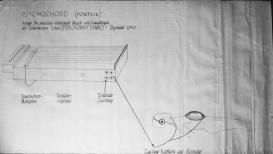The “psychochord” was a several-string monochord with an electronic transfer system. Aleks Pontvik, a self-proclaimed music therapist based in Stockholm, constructed the instrument in the 1940s for use in medical and therapeutic settings. Pontvik’s instrument never gained the same attention as the Walcker organ installed in a St. Petersburg gynecological clinic in 1907 (the topic of my former project at the MPIWG, spring 2018), and was used only in sessions between therapist and patient. Yet the psychochord is in many respects a later counterpart of that concert organ and its medical framework.
I interpret the psychochord as one of many steps towards a new understanding of listening and sound training as it affects patients. Pontvik connected the listener to the acoustic source via an electric cable. Even though his monochord was not played without electronic amplifiers, it represents a larger group of instruments built exclusively for curative and educational use by other musicians, educators, and composers. Positioned in time between the anthroposophical renaissance of the antique lyre in the 1920s, Carl Orff’s Schulwerk, and simple homemade instruments such as the “aquaphon” in the very recent past, the psychochord serves as a starting point for general questions about Pontvik’s view of the relationship between the object (instrument), the acoustical or rather musical source, its electronic transfer to a human body, and the listener in a therapeutic situation. This project forms part of a forthcoming book in which I explore the modern understanding of curative listening in music psychology and composition.

